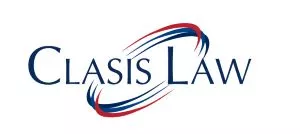The resolution of stressed assets has always been a matter of grave concern for India's financial sector. The Reserve Bank of India (RBI) had issued several instructions aimed at resolution of stressed assets in the Indian economy and also introduced several specific schemes at different times.
With the enactment of Insolvency and Bankruptcy Code, 2016, the RBI issued a harmonised and simplified generic framework for resolution of stressed assets namely, the Reserve Bank of India (Prudential Framework for Resolution of Stressed Assets) Directions 20191 (Prudential Framework). The Prudential Framework provides for early recognition, reporting and time bound resolution of stressed assets.
Any resolution plan implemented under the Prudential Framework requires an asset classification downgrade unless such resolution plan provides for change in ownership of the borrowers in which case the asset classification may be retained as or upgraded to 'Standard', subject to the prescribed conditions.
As a result of the economic fallout on account of Covid-19, Indian companies across sectors are under extreme financial stress. Such economic stress can potentially impact the long-term viability of many companies, which otherwise have a good track record.
Therefore, with the intent to facilitate revival of real sector activities and mitigate the impact of Covid-19 on the ultimate borrowers, the RBI has on 6 August 2020 issued a 'Resolution Framework for Covid-19-related Stress'2(Resolution Framework).
The Resolution Framework provides the lending institutions3 a window for one-time restructuring of the eligible corporate exposures without any change in ownership while classifying such exposures as 'Standard'. The accounts, which have slipped into NPA between invocation of the resolution process and implementation of the resolution plan, may also be upgraded as 'Standard' upon implementation of the plan pursuant to the Resolution Framework.
This article sets out analysis of the key features of the Resolution Framework as applicable to the corporate borrowers.
Eligible Exposures
The loan restructuring facility pursuant to the Resolution Framework can be extended only to such borrowers which have financial stress on account of Covid-19. The reference date for the outstanding amount of debt that may be considered for restructuring under the Resolution Framework has been set out as 1 March 2020.
However, certain credit facilities including, without limitation, the exposures to financial service providers, and the MSME borrowers having exposures of INR 250 million or less as on 1 March 2020 would not be eligible for loan restructuring pursuant to the Resolution Framework.
In order to be eligible for restructuring pursuant to the Resolution Framework, a loan account must be classified as 'Standard', but not in default for more than 30 days with any lender, as on 1 March 2020. Further, the accounts should continue to be classified as 'Standard' till the date of invocation of resolution facility under the Resolution Framework.
Invocation of Resolution Process
In case there is a single lender, such lender can take a decision regarding the restructuring of loan as per its board approved policies. The date on which the lender and the borrower would have agreed to proceed with a resolution plan under the Resolution Framework shall be considered as the date of invocation.
However, in case of multiple lenders having exposure to the borrower, the resolution process under the Resolution Framework can be invoked only if at least 60% (in number) of the lenders representing at least 75% by value of total outstanding credit facilities (fund based as well non-fund based) have agreed to invoke the same.
Inter Creditor Agreement (ICA)
In case of multiple lenders having exposure to an account, an ICA would need to be signed by all lenders within 30 days from the date of invocation.
Other lenders, which are not covered by the Resolution Framework, are also allowed to sign the ICA in which case such lenders shall be fully bound by the stipulations of the ICA.
Timelines
In the event the ICA is not signed by the lenders representing the prescribed threshold (at least 75% in value and at least 60% in number) within 30 days of the invocation of the resolution process, the invocation shall lapse, and the resolution process under the Resolution Framework cannot be invoked again in respect of such borrowers.
The resolution process under the Resolution Framework will have to be invoked by the lenders not later than 31 December 2020. In case the lenders decide to invoke the resolution process, the resolution plan would need to be implemented within 180 days from the date of invocation.
In case of breach of any timelines, the resolution process under the Resolution Framework would cease to apply immediately in respect of the borrower concerned, and any resolution plan implemented in breach of the stipulated timelines shall instead be fully governed by the Prudential Framework, or the relevant instructions as applicable to a specific category of lenders, as if the resolution process under the Resolution Framework was never invoked.
Dispute Resolution Mechanism
In case there arises any dispute between signatories to the ICA in respect of the resolution process, then such disputes shall be settled as per the provisions of the ICA. It is, therefore, mandatory for the lenders to ensure that the ICA should set out a dispute resolution mechanism to deal with dispute, if any, raised by any signatory to ICA.
The ICA should provide suitable mechanisms for information sharing amongst lending institutions during and after implementation of the resolution plan.
Constitution of Restructuring Committee
As envisaged under the Resolution Framework, the RBI has constituted a restructuring committee under the chairmanship of Mr. K. V. Kamath4.
The committee shall recommend the required financial parameters to be factored in the resolution plans, with sector specific benchmark ranges for such parameters. The parameters shall, inter alia, cover aspects related to leverage, liquidity, debt service ability etc.
Further, the committee shall have the responsibility of vetting the resolution plans to be implemented under the Resolution Framework in respect of accounts with aggregate exposure of INR 15 billion or more at the time of invocation. The committee shall also undertake process validation but shall not interfere with the commercial aspects of the resolution plans.
Permitted Features of the Resolution Plan
The resolution plan under the Resolution Framework may provide for, among others, any plan/action/reorganisation including regularisation of the account by way of payment of all over-dues by the borrower entity, sale of exposures to other entities / investors, and restructuring.
The Resolution Framework allows lenders to sanction additional credit facilities to address the financial stress of the borrower on account of Covid-19 even if there is no renegotiation of existing debt.
The Resolution Framework also permits lenders to allow extension of the residual tenor of the loan, with or without payment moratorium, by a period not exceeding 2 years. The moratorium period, if granted, shall come into force immediately upon implementation of the resolution plan.
The lenders can also opt for conversion of a portion of the debt into equity or other marketable, non-convertible debt securities issued by the borrower.
Evaluation of Resolution Plan
The lenders would be required to assess the viability of the resolution plan. For this purpose, each lender needs to put in place a board approved policy pertaining to implementation of viable resolution plans for eligible borrowers so as to ensure that the resolution facility under the Resolution Framework is provided only to borrowers having stress on account of Covid-19.
Such board approved policy must also set out in detail, among others, the manner in which resolution plan would be assessed, and the objective criteria that may be applied while considering the resolution plan.
In case of accounts with an aggregate exposure of INR 1 billion or more, the resolution plans would require independent credit evaluation by any one credit agency authorised by RBI.
Further, in case of accounts with an aggregate exposure of INR 15 billion or more, the resolution plans would require vetting by the restructuring committee constituted by the RBI.
Escrow Account
In case of accounts involving consortiums, the resolution plan shall provide for opening of an escrow account. All receipts as well as payments of money by the borrower to the lenders as well as additional disbursement, if any, to the borrower by the lenders shall be routed through the escrow account post implementation of the resolution plan. It means that the borrower cannot open any current account with any other bank post implementation of resolution plan.
For this purpose, the lenders shall enter into a formal agreement with the escrow manager. The escrow agreement shall set out the duties and responsibilities of the escrow manager and the lenders.
Default post-implementation of Resolution Plan
In case the borrower commits any default with any of the signatories to the ICA during the monitoring period5, it shall trigger the review period of 30 days as envisaged under the Prudential Framework.
The Prudential Framework sets out a period of 30 days from the occurrence of default wherein the lenders have to undertake a prima facie review of the borrower's account and decide on the resolution strategy, including the nature of the resolution plan as well as the approach for implementation of the resolution plan.
Concluding remarks
Indian government and the regulatory authorities have announced several relief measures for Indian companies facing the financial crisis caused by the Covid-19 pandemic. While Indian government has imposed a complete ban on initiation of fresh insolvency proceedings in respect of defaults arising during the period of 6 months commencing from 25 March 2020 (which may be extended by the government till 25 March 2021), the RBI also allowed the lending institutions to grant a moratorium of 6 months on payment of instalments in respect of all term loans outstanding as on 1 March 2020.
The moratorium allowed by the RBI is set to expire on 31 August 2020. However, the lenders were not in favour of an extension of moratorium but they were hoping for a well-balanced framework to be announced by the RBI.
The Resolution Framework indicates an extremely balanced approach from the RBI. While the Resolution Framework would allow lenders to structure the eligible exposure without asset classification downgrade, such facility has been restricted to such corporate borrowers which have been hit by the pandemic. There are strict timelines as well. The existing owners, who are facing difficulties in repayment of debt on account of business disruption caused by Covid-19, would have fair chance to restructure their outstanding loans while retaining control over their company.
However, while the Resolution Framework allows the non-banking financial companies (NBFCs) to restructure the debt granted by these NBFCs to the corporate borrowers, the exposure to the financial
service providers (which include NBFCs) cannot be restructured under the Resolution Framework. This could be a matter of concern for the NBFCs.
Despite this, it can be said that the RBI has done its bit for the financial sector. Now, it would be upto the lenders and the borrowers how well they utilise this one time opportunity in a judicious and transparent manner.
1 The text of the relevant notification can be accessed at the following link:
https://www.rbi.org.in/Scripts/NotificationUser.aspx?Id=11580&Mode=0
2 The text of the relevant notification can be accessed at the following link:
https://www.rbi.org.in/Scripts/NotificationUser.aspx?Id=11941&Mode=0
3 The lending institutions covered under the Resolution Framework are:
- All Commercial Banks (including Small Finance Banks, Local Area Banks and Regional Rural Banks);
- All Primary (Urban) Co-operative Banks/State Co-operative Banks/ District Central Co-operative Banks;
- All-India Financial Institutions; and
- All Non-Banking Financial Companies (including Housing Finance Companies).
4 The text of the relevant press release can be accessed at the following link:
https://www.rbi.org.in/Scripts/BS_PressReleaseDisplay.aspx?prid=50182
5 Monitoring period means the period starting from the date of implementation of the resolution plan till the borrower pays 10 percent of the residual debt, subject to a minimum of one year from the commencement of the first payment of interest or principal (whichever is later) on the credit facility with longest period of moratorium.
The content of this article is intended to provide a general guide to the subject matter. Specialist advice should be sought about your specific circumstances.


